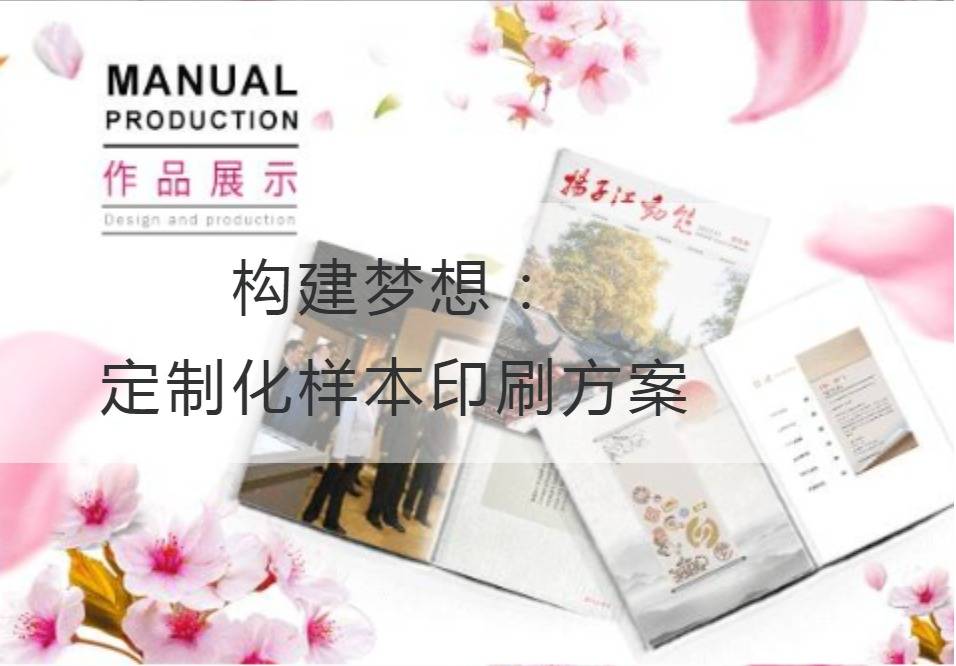Building a dream: Customized sample printing solution
Today, with the continuous advancement of technology, the printing industry is undergoing a revolutionary change. Traditional sample printing scheme can't meet the individual needs of customers, and customized sample printing scheme is becoming the first choice for people who pursue individuality. Customized sample printing solutions deliver unique prints to customers that break the boundaries of tradition and realize their dreams.
In the past, people had to choose traditional printing schemes, which were characterized by large production scale, high cost and long cycle times. Due to the restriction of many factors, printing enterprises can only provide relatively fixed design templates, and customers' choices are very limited. However, people crave unique prints, and they seek distinctive styles, personalized, customized content. Therefore, the traditional printing scheme can't satisfy people's pursuit of individuation.

Compared with traditional printing, the customized sample printing solution has the following advantages: First, a customized sample print solution is designed to meet the customer's individual needs, making each print unique and unique. Customers can customize design styles, patterns, and content to their preferences and needs for personalized printing. Second, customized sample printing solutions are flexible enough to quickly meet customer needs. Due to the development of digital printing technology, the production cycle of printed matter is greatly shortened, and a large number of personalized printed matter can be completed in a short time. Furthermore, the customized sample printing solution provides more choice, allowing customers to choose a variety of parameters such as material, size, process, and so on to create a more perfect print.
The main technology on which the customized sample printing scheme is based is digital printing. Digital printing technology is the best choice for personalization because of its high efficiency, high quality and high flexibility. Compared with traditional printing, digital printing technology does not need plate making and plate printing, and can realize instant printing and short-print printing, which greatly accelerates the printing cycle. At the same time, digital printing technology offers a wider selection of materials, making prints more creative and expressive. Digital printing technology provides solid technical support for customized sample printing schemes, making it easier to personalize the printed matter.
"If you have a heart, you can't worry about it. This ancient poem expresses both the belief in customised sample printing schemes and the encouragement of everyone who pursues their dreams. Everyone has their own dreams, and by customizing our sample printing scheme, we can make those dreams a reality. Whether individuals or businesses, customized sample printing solutions provide us with a platform to showcase our individuality and realize our dreams.
Customization on the road to building your dreamsSample printingThe programme will always be with us. With the power of digital printing technology, we are able to create our own prints in a more flexible and free way, changing with the times and making a difference. Let's pursue our dreams together, and the possibilities of customized sample printing solutions are endless.
Recommended Reading:
Enterprise internal magazine design: Visual enjoyment from "seeing" to "reading"
Arouse Employee Enthusiasm: Practical Guide to Enterprise Internal Journal Design
Enterprise internal magazine design: Constitutes the elements that foster enterprise temperament
Chroma, Line and Space: Aesthetic Elements of the Design of Internal Periodicals in Enterprises



